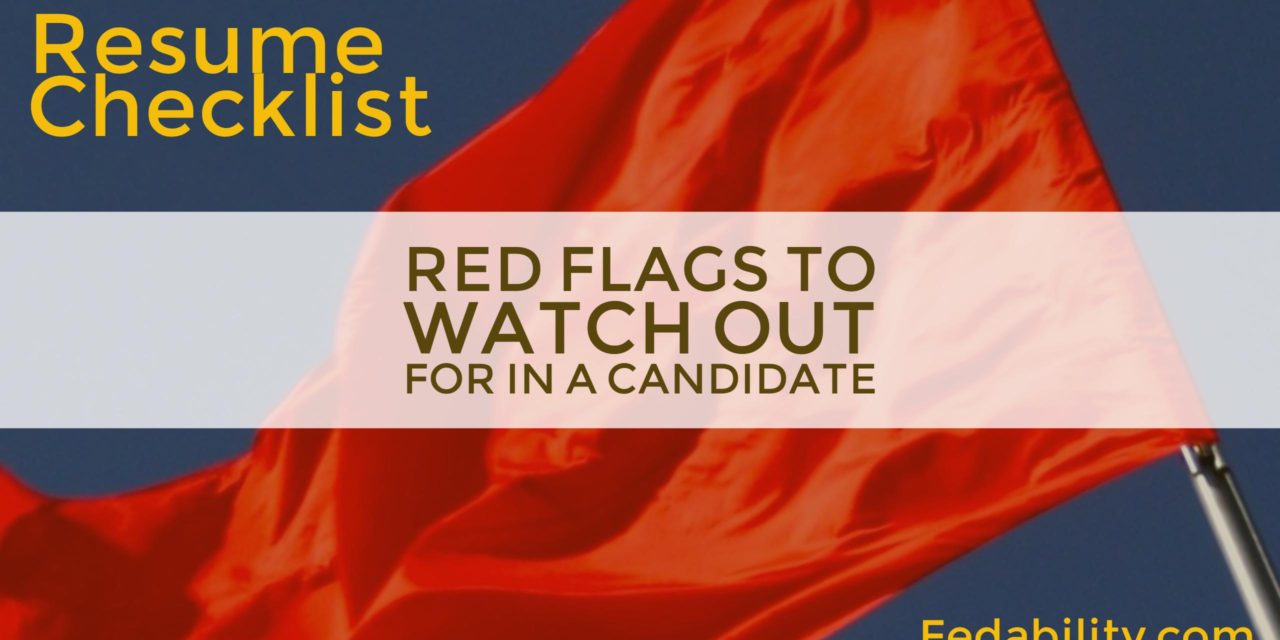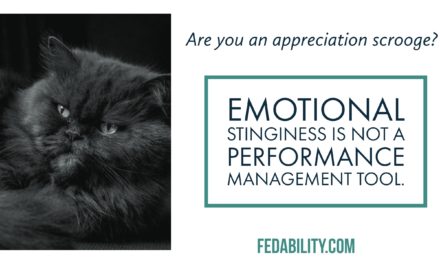As a hiring manager, you are probably in the unfortunate position of having more work than time to do it. As a result, you’re pressed to hire a new employee to pick up some of the work. Each day that goes by the work backs up. To make matters worse, Human Resources is probably pressuring you to make a selection to close out the opening. Wouldn’t it be nice to have a simple resume checklist to help you screen out some of the less obvious bad hires? You’re in luck, I’m here to help. I offer a checklist of 5 things to look for to help you screen your pile of resumes.
I’ve seen exhausted and overworked hiring managers extend a job offer to a questionable candidate. Their thought being that ‘Something is better than nothing’. I cringe each time I hear this knowing that something that’s better than nothing can easily become worse than nothing.
If you’ve been a manager for any length of time, you know just how much time it takes to manage a bad hire out of an agency. The paperwork. The meetings. Stress. Spreading dissatisfaction within the team. All this on top of the work the new hire was supposed to be helping take of your plate. Now that work is either building up or having to be redone repeatedly.
Given how much work you have on your plate and the pressure you are probably under to have found this page, I want to offer you a resume checklist of red flags you might miss.
Resume Checklist
While I’d like this to be a simple yes/no resume checklist, I want to be clear that it is help you identify warning signs that you might be on the verge of a bad hire. If the resume doesn’t make it past one or two items on the checklist, it may be worth the benefit of the doubt. At least conduct a mini phone interview or bring them in for a face-to-face interview to check them out further.
1. Dates between jobs.
Here you are looking for gaps between jobs. These gaps can be explained by a variety of things that wouldn’t impact future job performance (e.g., returning to school, new child and/or caring for family). It could also mean the candidate left a position without having a plan. Or, it could mean they were asked to leave a job. While you cannot ask about a new child or caring for family, you can check the dates of any education or volunteer work on the resume. Further, during an interview you can ask questions about what they liked or disliked about prior jobs. Those answers may give insight into the candidate’s fit with the position as well as why there were gaps.
Also keep an eye out for overlaps of job dates. In a resume I recently reviewed, the person appeared to current hold 4 different jobs. I understand overlaps due to transition. I can also understand wanting to maintain other credentials (e.g., teaching part-time in a college). It seems suspicious that someone can maintain 4 jobs simultaneously and do all of them well. This overlap wasn’t a deal-breaker but I did look closer at other aspects of the resume.
2. Length of tenure for prior jobs.
The days of staying at a single job for 20 years are gone for most people. As a result, you can expect shorter tenures of 3-5 years as the new normal. This gives the person time to learn the job, perform and grow, and then begin seeking new opportunities. The potential red flag is whether the person has a history of staying a year or less for several jobs. They may be a job-hopper. If these prior positions were all Federal jobs, you might also look at the progression of grades. A change in jobs annually with an increase in grade may signal the candidate is a Climber.
If there’s a single occurrence of a short job-hop over 10 years then it may have been a strange circumstance. Perhaps they were misled about the job responsibilities. Perhaps they discovered their new boss was a nightmare. There’s any number of reasons that someone might leave a job quickly. What you are looking for is a pattern of short tenures.
3. Spelling and punctuation.
I’ve discussed before the importance of checking working and the value of spelling/grammar on the job. Remember that the resume is the most important, first impression the candidate has to make with you. I understand wanting to give someone the benefit of the doubt. But if they haven’t taken the time to proof read their resume…imagine what is coming when they get on the job and are comfortable. It’s not going to get better. It’s a red flag, but you’ll want to trust your gut here a bit.
4. Education and certificates.
If the position you are hiring for is specialized, it’s important to look at the degrees earned, courses taken, and any additional certifications the person holds. Is the Masters Degree they hold relevant to the current position? A Masters in Education is not equal to a Masters in Biology – but Human Resources may not have screened it out. Unrelated degrees or education may be a red flag that they won’t enjoy the position they are interviewing for with you. That is, the position you are hiring for may not be their passion. If you do interview them, it’s worth asking them what they are passionate about or enjoy doing in a job. Conversely, does the education and certificates indicate to you that they are invested in maintaining their skills and credentials? Someone who shows that they are actively developing themselves may be a big green flag.
5. Recency of relevant job experience.
As you read through the resume, do you see relevant job experience in the first 2 or 3 jobs? Or, is the first mention of relevant job experience closer to 10 years back?
As you read through their job history, does it seem like a natural progression of positions and growth? If there seems to be a recent progression that is unrelated to the current position it may be a red flag.
Now it is possible that someone was following a career path that they now find unsatisfying. It may be that this position is an opportunity to get back to their true passion. But it could also mean that they are desperate to get out of their current job. It may be that your job will serve as a quick get-away until they can find something better. Also worth considering if it’s been a while since they did similar kinds of work is whether their knowledge and skills are still up-to-date. It may be that the industry has made significant changes. Again, not a deal breaker but you’ll need to invest significant resources into getting them up to speed.
In conclusion, keep in mind that these red flags should not be a deal breaker by themselves. This resume checklist is intended to help you look for patterns in a resume that could be warning that the candidate will be a bad hire. The resume is an important first indicator of a person’s work ethic. If you see a pattern, don’t waste your time or theirs with an interview.
What are some other red flags that hiring managers should keep an eye on? Share your thoughts in the comments below.
Like this post? Consider signing up for our weekly newsletter. Each week you’ll get updates on our newest posts. You’ll also receive access to our newest free give-aways. I promise not to spam you or sell your contact information to anyone.






Great counsel for someone on the other side of the turnstile. Thank you!
Glad you found it helpful! Supervisors have a tough job so I hope this helps at least a little.
Good article.
Thanks Nena! And welcome to our blog!